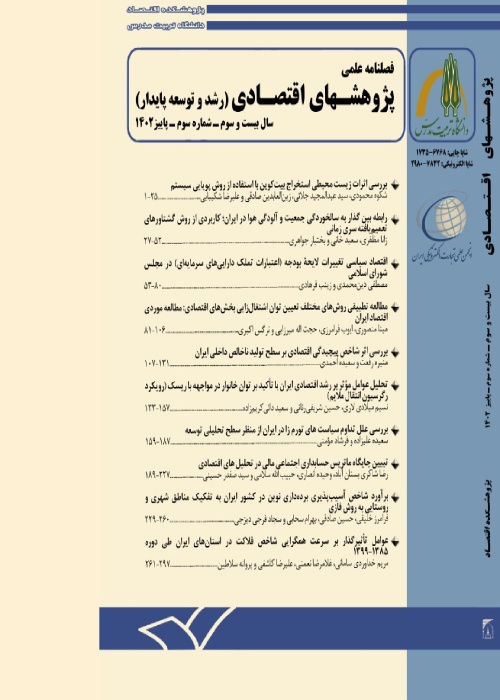The Effects of the First Phase Implementation of Subsidy Targeting on the Welfare of Low Income Households Using Structural Path Analysis
Author(s):
Abstract:
The implementation of any economic policy that has expansionary effects requires relatively stable economic conditions. Under such conditions it is expected that potential predictable effects of such policy implementation on welfare of households, especially low income households could be evaluated. The economic context of poverty in the Iranian economy and the ineffectiveness of supportive institutions in particular circumstances make the effects of economic policies on low-income households widespread. In some cases, these effects are so broad that policy-makers are forced to leave or select the opposite course of that policy. Under these conditions, analyzes that illustrate the effectiveness path of policy help the policy-maker to have a clearer picture of the probable consequences of a policy. The main aim of this article is to analyze quantitatively the effects of the recent subsidy targeting policy on the welfare index (cost of living index) in different deciles of urban and rural households using social accounting matrix (SAM) approach. For this purpose two updated social accounting matrices for the years 2009 and 2011 have been used. Both matrices include 40 economic sectors. Comparing the cost of living index, we find that welfare vulnerability of households has decreased in general, however the magnitude of welfare reduction differs between rural and urban households among income deciles. Our findings reveal that the cost of living index of rural households is more than the corresponding urban households. The vulnerability in the natural gas distribution sector has tripled in urban areas in 2011and in rural areas it is nearly four times higher than 2009 level. We also find that every 100-unit increase in cost of electricity will potentially increase welfare index of urban and rural household by 34 and 46 units, respectively. From the distribution viewpoint, the welfare loss is lower for high-income deciles. In addition, our findings show that the degree of vulnerability in middle income groups in majority of sectors is less than the other income groups. The structural path of changes shows that subsidy targeting has created wide complexity and entanglement in the path of the effectiveness of fuel price changes on price indices, especially on the household living cost index. Accordingly, before implementing subsidy targeting scheme, the increase in fuel prices was influencing the household cost index in five ways, while after targeting the increase in fuel prices affected it through the twenty different paths.
Keywords:
Language:
Persian
Published:
The Economic Reseach, Volume:17 Issue: 3, 2017
Pages:
193 to 225
magiran.com/p1739204
دانلود و مطالعه متن این مقاله با یکی از روشهای زیر امکان پذیر است:
اشتراک شخصی
با عضویت و پرداخت آنلاین حق اشتراک یکساله به مبلغ 1,390,000ريال میتوانید 70 عنوان مطلب دانلود کنید!
اشتراک سازمانی
به کتابخانه دانشگاه یا محل کار خود پیشنهاد کنید تا اشتراک سازمانی این پایگاه را برای دسترسی نامحدود همه کاربران به متن مطالب تهیه نمایند!
توجه!
- حق عضویت دریافتی صرف حمایت از نشریات عضو و نگهداری، تکمیل و توسعه مگیران میشود.
- پرداخت حق اشتراک و دانلود مقالات اجازه بازنشر آن در سایر رسانههای چاپی و دیجیتال را به کاربر نمیدهد.
دسترسی سراسری کاربران دانشگاه پیام نور!
اعضای هیئت علمی و دانشجویان دانشگاه پیام نور در سراسر کشور، در صورت ثبت نام با ایمیل دانشگاهی، تا پایان فروردین ماه 1403 به مقالات سایت دسترسی خواهند داشت!
In order to view content subscription is required
Personal subscription
Subscribe magiran.com for 70 € euros via PayPal and download 70 articles during a year.
Organization subscription
Please contact us to subscribe your university or library for unlimited access!


